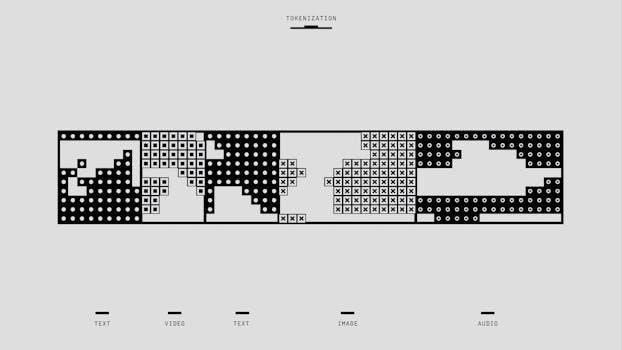Overview of Math Makes Sense 9 PDF
The Math Makes Sense 9 PDF provides a digital version of the comprehensive textbook used for grade 9 mathematics. It covers a wide range of math topics, ensuring students have access to learning materials on various devices. This digital format facilitates easy access to the curriculum.

Availability of Math Makes Sense 9 in PDF format
The Math Makes Sense 9 textbook is increasingly available in PDF format, catering to the needs of students who prefer digital learning resources. This availability allows for easy access on computers, tablets, and smartphones, making it convenient for studying both at home and in school. Numerous online platforms and educational websites offer the PDF version, sometimes for free download, while other instances might require a purchase or subscription. These digital copies often include the complete textbook content, sometimes with additional features such as interactive elements. Furthermore, some online resources also provide supplementary materials like workbooks, answer keys, and practice exercises in the PDF format. This digital flexibility also allows students to search, highlight, and annotate the text, enhancing the study experience. The PDF format ensures that the content is easily shareable and accessible without the need for physical textbooks, which is very useful for students.
Purpose of the Math Makes Sense 9 Textbook
The primary purpose of the Math Makes Sense 9 textbook, whether in print or PDF format, is to provide a comprehensive and structured learning experience for grade 9 mathematics students. It is designed to help students develop a deep understanding of core mathematical concepts, including number systems, algebra, geometry, and data analysis. The textbook aims to foster critical thinking and problem-solving skills through a variety of exercises, examples, and real-world applications. It serves as a guide for teachers, offering a structured curriculum and resources to support classroom instruction. The textbook also ensures that students develop a solid mathematical foundation, preparing them for higher-level math courses. It promotes active engagement through explorations, discussions, and various learning activities. Ultimately, the textbook aims to make mathematics accessible and relevant, encouraging students to see the value of mathematical thinking. The content is designed to align with educational standards, ensuring that students are prepared for assessments and future studies.

Content and Curriculum of Math Makes Sense 9
The curriculum in Math Makes Sense 9 is designed to provide a balanced approach to mathematical concepts. It covers essential topics, ensuring students build a strong foundation in various areas of mathematics while emphasizing problem-solving skills.

Key Topics Covered in Math Makes Sense 9
The Math Makes Sense 9 curriculum encompasses several key mathematical areas. Students delve into the world of numbers, exploring square roots and surface areas, understanding the principles of exponents and their applications, and mastering the use of rational numbers. The curriculum also introduces linear relations and their graphical representations, which is essential for future studies in algebra. Further, the course covers polynomials, helping students understand algebraic expressions. Linear equations and inequalities are included, providing the basis for solving various problems. Students also explore similarity and transformations in geometry, gaining spatial reasoning skills. Circle geometry forms another important component of the curriculum, and it touches on probability and statistics. These topics aim to provide a well-rounded mathematical education, preparing students for more advanced courses in mathematics. The integration of practical examples and problem-solving scenarios helps students apply their knowledge effectively and develop critical thinking. This approach ensures a deep understanding of each topic and its relevance; The course also fosters skills in mathematical reasoning and communication.
Chapter Breakdown⁚ Sample Chapters
The Math Makes Sense 9 textbook is structured into several chapters, each focusing on a specific mathematical concept. For instance, Chapter 1 covers “Square Roots and Surface Area,” introducing students to the fundamental concepts of square roots and their application to surface area calculations. Chapter 2 delves into “Exponents,” exploring the rules and properties of exponents. Chapter 3 focuses on “Rational Numbers,” where students learn to manipulate and perform operations with rational numbers. Chapter 4 introduces students to “Linear Relations,” which helps to create understanding of patterns and relationships between variables. These initial chapters lay the foundation for more advanced topics. Each chapter includes detailed explanations, examples, and exercises to reinforce learning. The structure of these chapters facilitates a systematic approach to math education, allowing students to build knowledge progressively. This clear progression ensures a comprehensive grasp of each topic before moving to the next. The chapters are designed to be engaging and accessible to all learners.
Square Roots and Surface Area (Chapter 1)
Chapter 1 of Math Makes Sense 9, titled “Square Roots and Surface Area,” initiates the student into the world of geometric calculations and fundamental number concepts. It begins by defining what a square root is and how to compute it, exploring both perfect and non-perfect squares. This chapter emphasizes the practical application of square roots, particularly in calculating the side lengths of squares and cubes. Furthermore, it transitions into the study of surface area, covering how to find the total area of the outer surfaces of various three-dimensional shapes. Students learn how to calculate surface areas for cubes, rectangular prisms, and other common geometric solids. The chapter includes several examples and practice problems which ensure students understand the concepts effectively. It lays the foundational knowledge that is necessary for subsequent topics, integrating algebraic thinking with geometric problem-solving. This chapter is designed to build a strong base for future mathematical studies, focusing on both conceptual understanding and skill mastery.
Exponents (Chapter 2)
Chapter 2 of Math Makes Sense 9, focusing on “Exponents,” introduces students to the concept of representing repeated multiplication with exponents. It starts by explaining the basic structure of exponential notation, distinguishing between the base and the exponent. This chapter delves into the laws of exponents, including the product rule, quotient rule, power rule, and the rule for zero exponents. Students learn how to simplify expressions involving exponents and apply these rules in various problem-solving scenarios. The chapter includes examples and problems that gradually increase in complexity. It also covers negative exponents and their relationship with fractions. The focus of this chapter is to build a solid understanding of exponents, enabling students to work with powers confidently. It also lays the foundation for algebraic manipulations that are crucial for further mathematical studies. The material is presented in a way that encourages both conceptual understanding and procedural fluency.
Rational Numbers (Chapter 3)
Chapter 3 in Math Makes Sense 9, dedicated to “Rational Numbers,” introduces students to a broader understanding of numbers beyond integers. This chapter focuses on defining what rational numbers are, including fractions, decimals, and percentages, exploring their relationships and conversions. Students learn how to compare and order rational numbers on a number line. They work with operations involving rational numbers, such as addition, subtraction, multiplication, and division, including mixed numbers. The chapter also addresses problem-solving involving these operations in various practical situations. It uses visual models, such as number lines and diagrams, to aid student comprehension. Furthermore, the chapter delves into how to estimate with rational numbers, enhancing their number sense. The material encourages the students to develop both computational skills and conceptual understanding in dealing with rational numbers, which form the basis for more advanced mathematical topics. This chapter builds from prior knowledge and extends it logically.
Linear Relations (Chapter 4)
Chapter 4 of Math Makes Sense 9, which delves into “Linear Relations,” introduces students to the concept of relationships between two variables; This chapter focuses on identifying patterns and relationships using tables, graphs, and equations. Students learn how to represent linear relations in different forms, including equations in the form y = mx + b. The chapter explores the concept of slope and y-intercept and their role in determining the characteristics of a line. Students develop skills in graphing linear relations and interpreting graphs to identify slopes and intercepts. They learn how to determine equations of lines from graphs and tables, and how to use these equations to solve problems. Furthermore, the chapter includes practical applications of linear relations in real-world scenarios; This chapter promotes critical thinking and problem-solving skills, establishing a foundation for algebraic concepts. The material also focuses on relating patterns found in tables to linear relations and develops an understanding of how changes in one variable affect another.
Use of Workbook and Practice Materials
The Math Makes Sense 9 curriculum is often supplemented with workbooks and practice materials to reinforce the concepts taught in the textbook. These resources are designed to provide students with opportunities to apply their knowledge and hone their skills through practice problems and exercises. The workbook usually contains a variety of questions, ranging from basic skill-building tasks to more complex, problem-solving scenarios. This helps students solidify their understanding of each topic and allows them to identify areas where they may need additional support. The practice materials often include step-by-step examples, helping students understand the thought process behind solving different types of math problems. These practice materials are crucial for developing proficiency in math, and they are instrumental in preparing students for tests and assessments. The workbook also helps in reinforcing and testing the concepts from the textbook and provides additional homework and practice. The resources are also a great way for students to track their progress.

Accessibility and Resources
The digital format of Math Makes Sense 9 PDF makes it easily accessible on various devices, providing flexibility for students. Additional resources, like answer keys and supplementary materials, are often available to support learning and practice.
Download Options for Math Makes Sense 9 PDF
The Math Makes Sense 9 PDF is typically available for download through various educational platforms, school websites, and online resource repositories. Many educational institutions provide direct links to the PDF on their websites or through their online learning management systems, ensuring students have easy access to the textbook. Some third-party websites and educational resource sites also offer the PDF for download, though it’s essential to verify the authenticity and legality of such sources. It’s important for students and educators to be cautious and choose reputable platforms to avoid downloading corrupted or unauthorized files. Often, these downloads are provided free of charge, as they are meant to facilitate learning and instruction. Some sites may require registration, while others may provide direct downloads without any registration required. Always prioritize downloading from official or trusted educational sources to ensure you have the correct and complete version of the textbook. Always be aware of the file size and ensure you have enough storage on your device before downloading the file. The file sizes can vary, but they are generally large due to the extensive content included in the textbook. Be sure to check your internet connection is stable to avoid issues with your download.
Supplementary Materials and Answer Keys
In addition to the core Math Makes Sense 9 PDF textbook, various supplementary materials and answer keys are often available to enhance the learning experience. These resources may include workbooks with extra practice problems, detailed solution manuals, and chapter-specific notes packages that help students solidify their understanding of the concepts. Answer keys, whether integrated or separate, are crucial for students to check their work and identify areas where they may need additional help. Teachers may provide these materials through their websites, online learning portals, or during in-class sessions. Supplementary materials, such as practice quizzes, review sheets, and interactive exercises, can further support students’ learning. Some online platforms might offer interactive versions of the exercises. These additional resources are designed to complement the textbook, ensuring a well-rounded and comprehensive learning experience. These materials can help students with diverse learning styles by providing different ways to engage with the material. Always ensure the answer keys are the correct ones for the version of the textbook you are using. It’s also important to use the answer keys responsibly as a tool for learning and not just copying answers. The availability of these supplementary resources can greatly enhance the effectiveness of using the Math Makes Sense 9 PDF.
